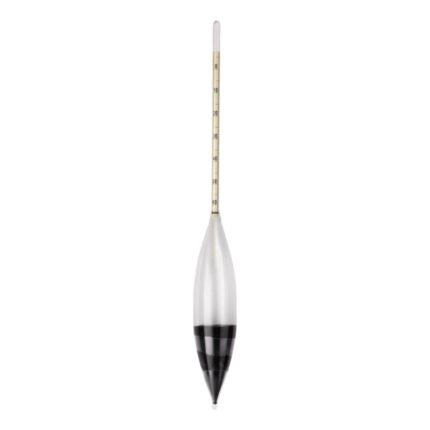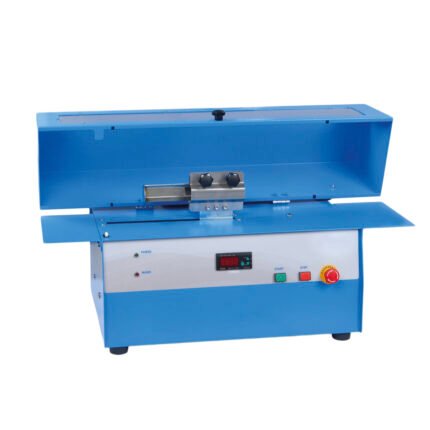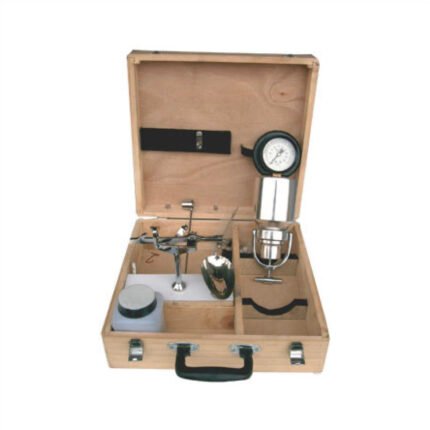AZA 0879 SAND POURING CYLINDER
- Sand Pouring Cylinder: Essential for the Field Density Test (Sand Replacement Method).
- Accurate Volume: Precisely measures the volume of excavated soil holes.
- In-Situ Density: Crucial for determining in-situ soil density directly in the field.
- Standard Compliant: Meets relevant ASTM and IS standards for geotechnical testing.
- Durable: Robust design for reliable performance in demanding field conditions.
- Azalab Quality: High-precision equipment for accurate soil density assessment.
Description
AZA 0879: Precision for In-Situ Soil Density Determination
The AZA 0879 Sand Pouring Cylinder from Azalab is a fundamental and indispensable tool for civil and geotechnical testing professionals. It’s designed to precisely determine the in-situ density of soils, forming the core of the widely used Sand Replacement Method. This apparatus is vital for quality control in earthwork construction, road building, and foundation preparation. Accurately assessing the dry unit weight of compacted soil directly in the field is crucial for verifying that construction meets specified compaction requirements, which in turn ensures the long-term stability and performance of engineered structures.
The principle of the Field Density Test with this cylinder is effective and straightforward. A small, carefully excavated test hole is made in the compacted soil. The volume of this hole is then precisely determined by filling it with a known quantity of calibrated sand (often referred to as ‘Ottawa sand’ or ‘standard sand’) poured from the sand pouring cylinder. By comparing the weight of the sand required to fill the hole with its known density, the volume of the hole is calculated. Subsequently, the dry unit weight of the excavated soil is determined, providing a direct measure of its current field density.
The AZA 0879 itself is a cylindrical container with a conical funnel at its base. A valve or shutter mechanism at the bottom precisely controls the flow of sand into the test hole. This design ensures a consistent flow rate, minimizing voids and ensuring accurate volume measurement. It’s typically used with a detachable circular tray that features a central hole, which acts as a guide for excavating the test hole and a stable platform for placing the cylinder during the sand pouring process. Various sizes are available (e.g., 3 liters, 4 liters, and 6.5 liters), each suited for specific ranges of hole volumes and soil types.
Constructed from robust, corrosion-resistant materials, the AZA 0879 Sand Pouring Cylinder is built for the demanding conditions of field use. Its durability ensures longevity and consistent performance, even with frequent transportation and handling on construction sites. The simplicity of its operation combined with its precision makes it a highly effective tool for routine soil density checks. This method is internationally recognized and conforms to standards such as ASTM D1556 (Standard Test Method for Density and Unit Weight of Soil in Place by the Sand-Cone Method) and IS 2720 (Part 28) (Methods of test for soils: Determination of dry density of soils in place by sand replacement method). For a more in-depth understanding of soil density principles and compaction, additional resources from academic textbooks or professional bodies like the American Society for Testing and Materials (ASTM) or the Bureau of Indian Standards (BIS) can provide valuable information.
By incorporating the AZA 0879 Sand Pouring Cylinder into your field testing protocols, you equip your team with a reliable and accurate means to ensure proper compaction, which is fundamental to the stability, safety, and long-term performance of all earthwork structures.
Specifications for the AZA 0879 SAND POURING CYLINDER
- Model Number: AZA 0879
- Apparatus Type: Sand Pouring Cylinder (for Field Density Test / Sand Replacement Method)
- Purpose: Determination of In-Situ Density / Dry Unit Weight of Soil
- Construction: High-quality, corrosion-resistant metal (e.g., galvanized steel or brass).
- Cylinder Capacity: Typically available in various capacities (e.g., 3-liter, 4-liter, 6.5-liter) to suit different test hole volumes and maximum particle sizes. (Please specify desired capacity when ordering.)
- Cone/Funnel: Integrated conical funnel at the base for controlled sand flow.
- Shutter/Valve: Quick-release or sliding valve mechanism to control sand flow.
- Circular Tray: Detachable circular tray with a central hole and flange for guiding excavation and mounting the cylinder.
- Accessories (often supplied separately or as part of a kit):
- Standard Calibrated Sand (e.g., Ottawa Sand).
- Scoop/Trowel for excavation.
- Chisel for hard soils.
- Brush for cleaning.
- Density plate for calibration.
- Weighing balance (for soil and sand).
- Compliance: Designed to meet standards such as ASTM D1556, IS 2720 (Part 28).
- Application: Quality control in compaction, embankment construction, road subgrades, foundation fills.
FREQUENTLY ASKED QUESTIONS (FAQ) about the AZA 0879 SAND POURING CYLINDER
Q1: What is the main use of the AZA 0879 Sand Pouring Cylinder? A1: The AZA 0879 Sand Pouring Cylinder is a primary tool for conducting the Field Density Test (Sand Replacement Method), which determines the in-situ density of compacted soil on construction sites.
Q2: How does this cylinder help measure soil density? A2: It’s used to accurately measure the volume of a carefully excavated hole by filling it with calibrated sand from the cylinder. This volume, combined with the weight of the excavated soil, allows for the calculation of the soil density.
Q3: What capacity cylinders are available for the AZA 0879? A3: The AZA 0879 typically comes in different capacities, such as 3-liter, 4-liter, or 6.5-liter, to accommodate various test hole sizes and meet specific project requirements for geotechnical testing.
Q4: Is the AZA 0879 suitable for all types of soil? A4: The Sand Pouring Cylinder method is most effective for fine-grained to medium-grained soils. It may be challenging for very coarse, rocky, or highly cohesive soils, where other methods like the rubber balloon method might be preferred.
Q5: What international standards does the AZA 0879 comply with? A5: The AZA 0879 is manufactured to meet standards like ASTM D1556 and IS 2720 (Part 28), ensuring its reliability and adherence to established testing procedures.
Q6: What other equipment is needed to perform the Field Density Test with this cylinder? A6: To complete the Field Density Test, you’ll also need calibrated sand, a base plate, excavation tools (trowel, chisel, scoop), a brush, and a precise weighing balance.
Q7: Why is accurate in-situ soil density measurement important? A7: Accurate in-situ density is crucial for geotechnical testing because it verifies that compaction targets are met, directly influencing the bearing capacity, stability, and long-term performance of foundations, roads, and earth structures.
Additional information
| Model Number |
AZA 0879 |
|---|---|
| Apparatus Type |
Sand Pouring Cylinder (for Field Density Test / Sand Replacement Method) |
| Purpose |
Determination of In-Situ Density / Dry Unit Weight of Soil |
| Construction |
High-quality, corrosion-resistant metal |
| Compliance |
Designed to meet standards such as ASTM D1556, IS 2720 (Part 28). |
| Application |
Quality control in compaction, embankment construction, road subgrades, foundation fills. |
Related products
AZA 0848 PLASTIC LIMIT SET
AZA 0858 SOIL HYDROMETER
AZA 0861 MOTORISED SAND EQUIVALENT SHAKER
AZA 0862 PLUMMET BALANCE
AZA 0863 STANDARD COMPACTION TEST
- Standard Compaction Test: Specifically designed to perform the Standard Proctor Compaction Test.
- Fundamental Soil Property: Determines the maximum dry density and optimum moisture content of soils.
- Essential for Earthwork: Crucial for quality control in road construction, embankments, and foundations.
- Complete Apparatus: Includes a robust compaction mould, standard rammer, and necessary accessories.
- Standard Compliant: Adheres to international standards such as ASTM D698 and equivalent IS/BS norms.
- Azalab Quality: Durable and precise equipment for reliable geotechnical testing results.
AZA 0865 HEAVY COMPACTION TEST
- Heavy Compaction Test: Specifically designed to perform the Modified Proctor Compaction Test.
- High Compaction Energy: Utilizes a heavier hammer and greater drop height for higher soil density requirements.
- Crucial for Critical Projects: Essential for quality control in heavy civil engineering applications like airfields and high-stress pavements.
- Complete Apparatus: Includes a robust compaction mould, heavy rammer, and necessary accessories.
- Standard Compliant: Adheres to international standards such as ASTM D1557 and equivalent IS/BS norms.
- Azalab Quality: Durable and precise equipment for reliable geotechnical testing results.
AZA 0869 POCKET PENTROMETER
AZA 0874 RAPID MOISTURE METER
- Rapid Moisture Meter: Utilizes the calcium carbide method for quick determination of moisture content.
- Field-Ready: Ideal for field testing of soils, aggregates, sand, and fine materials.
- Portable & Self-Contained: No external power source required, perfect for on-site quality control.
- Immediate Results: Provides fast, accurate readings, enabling immediate adjustments.
- Durable Construction: Robust design suitable for demanding construction and geotechnical testing environments.
- Azalab Quality: Reliable and efficient tool for rapid soil moisture assessment.

 Rock
Rock Aggregate
Aggregate Cement
Cement Concrete
Concrete Soil
Soil Steel
Steel Bitumen/Asphalt
Bitumen/Asphalt Security Survey Equipment
Security Survey Equipment General Items
General Items











